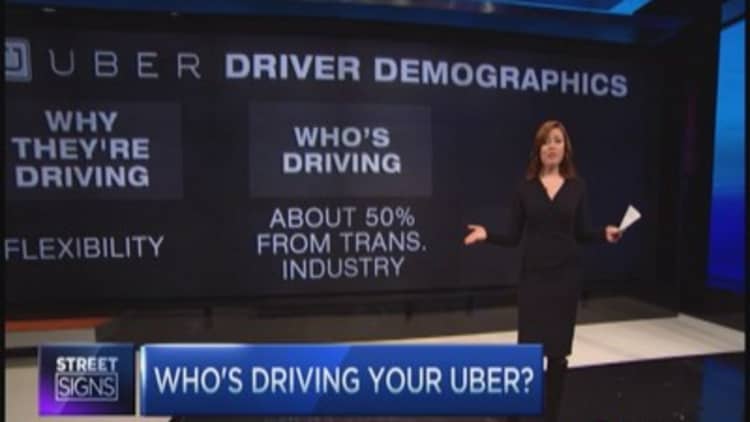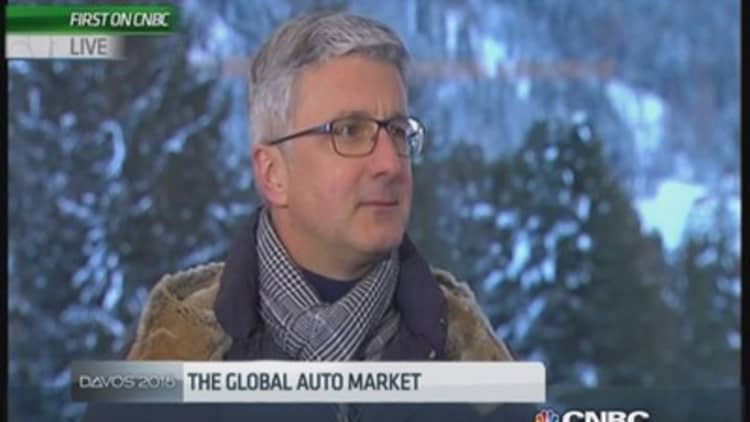If you happen to meet Bambi one night while driving on a dark road, here's a suggestion: Hit him.
Animal lovers may take umbrage, and the advice does seem horrifying. Yet a wide body of evidence suggests that motorists should actually hit animals that jump in front of their cars instead of trying to avoid them, if the driver cannot brake safely.
Why? Because by some estimates, swerving to avoid the loss of animal life is a very costly problem. While being responsible for the death of an animal is tough to carry on your conscience, some auto safety experts say its better than the alternatives.
"When considering some of the options a driver could take when confronted by an animal in the road—swerve right into a tree or ditch, swerve left into oncoming traffic, or brake severely which would promote the animal possibly rolling up the hood and into and through the windshield— the best advice is simply, hit it," said Robert Sinclair of AAA.
"It's very counterintuitive, and many respond that they would not want to kill Bambi," he said. "But I'd rather kill Bambi than myself and my family."
The multi-billion dollar problem

Even though it might be the safest, it is merely the least of all evils. One estimate from a Federal Highway Administration (FHWA) report to Congress in 2008 said collisions with wildlife cost motorists and taxpayers more than $8 billion per year. Although people rarely die from hitting a big animal, it can do a lot of damage to a car—and sometimes it can land a driver in the hospital.
The flip side is that hitting an animal can be dangerous for a species' longevity. The same report identified 21 species considered threatened or endangered in the United States, for which road mortality is "one of the major threats to their survival."
Many other species are far more common—such as white-tailed deer—but the report noted that every deer hit by a car is one that does not bring revenue to state-run hunting programs. While the number of auto crashes has held steady, the number of animal-related collisions have risen. The FHWA report said there were about about 300,000 such collisions reported annually as of 2008, and researchers believe that number is still low—some local government agencies do not have the resources to collect statistics, and some drivers don't report collisions.
Some ecologists, such as the Wildlife Conservation Society's Amanda Hardy, observe that smaller species, including birds, squirrels, and even reptiles and amphibians, usually are not counted at all.
"There is a lot of question about the actual numbers," Hardy said. "Many of us who work in the field have been pushing for a national data reporting standard. That could go a long way to helping us understand what is going on."
Insurance companies, however, have much higher figures.
State Farm estimates that there were 1.22 million collisions between deer and vehicles alone in the United States between July 1, 2012, and June 30, 2013. That was a slight decline over the previous year, which is encouraging. The FHWA report from 2008 showed that animal-related collisions became a larger and larger proportion of all auto accidents beginning in the mid-1990s to 2004. State Farm values damage to vehicles alone at about $4 billion a year.
Some times of the year are worse than others. During spring and fall, when animals are mating or migrating, roadkill numbers spike—and that number briefly jumps even higher near the beginning and end of daylight saving time. Scientists think this might be because animals are having trouble adjusting to the change in human commute times.

Certain parts of the country also get hit harder than others. Deer—one of the frequently struck species, and among those that cause the most damage to cars—are especially abundant in the eastern half of the United States.
Drivers in far northern states such as Maine occasionally crash into moose, which are particularly dangerous since the animal's sheer height gives it a much higher chance of crashing through a windshield and killing a driver.
Scientists who study the effects of human transportation on wildlife have been able to identify crossing points for animals, and have seen some success redirecting the animals away from danger. Government agencies are building fences, overpasses and culverts at areas where wildlife are likely to cross a road.
Besides developing a database and data reporting standard, Hardy thinks a separate federal fund for state transportation departments could be used for wildlife crossings or fences. That might prod state governments to consider making improvements, without having to dip into their highway appropriation budgets. It could be a lot cheaper in the long run to build the protections into roads ahead of time.
"It would pay for itself in terms of collisions avoided," Hardy said. "But there would be other benefits to society as well, in terms of protecting wildlife," she said.
"Vehicle-related deaths are a problem [for] 21 species on the endangered species list, and once an animal is on that list, the preservation efforts required by law can cost a lot," Hardy added. "It might cost less just to keep them off the list in the first place."

For concerned drivers, there are also devices that can sense wildlife in front of a car and automatically shoo it away with flashing lights or sound.
"If you know you are in an area where you know there are animals, you can really just drive a bit slower and be prepared—it is actually a very effective technique," said Hardy.


